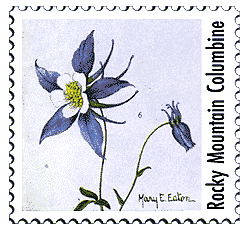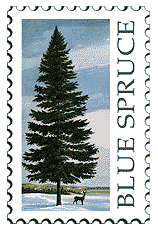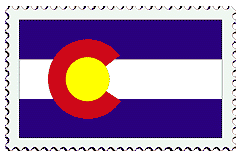
State Flower:
Columbine
On April 4, 1899 the Rocky Mountain Columbine, a lavender-blue and white flower with a yellow center, was adopted at the state flower. Found on cliffs and rocky slopes it blooms between June and August.

State Bird:
Lark Bunting
In 1931 state legislators chose the Lark Bunting as the official state bird.

State Tree:
Blue Spruce
In 1939 Colorado chose the Blue Spruce as its state tree. The needles on the Blue Spruce have a bluish waxy coating, giving the appearance of a crisp, radiant blue, especially against a background of white snow. With a height up 100 feet tall and unique blue coloring, it stands out among other pines in the Rocky Mountain region.

State Flag:
The red, white and blue colors were adopted from the US flag. The red "C" stands for Colorado, the Spanish word for red. Folklore says the Red also represents the red earth, while the white is for the snow on the Rockies, the Blue is for the blue sky, and yellow is for the sun.

Famous Person:
Zebulon Montgomery Pike
The 14,110-foot Pike's Peak in Colorado was named after Lieutenant Zebulon M. Pike who had been ordered to explore the headwaters of the Arkansas and Red Rivers. A young man of 27, he left St. Louis on July 15, 1806 with a party of 22 men and went up the Arkansas River. They reached the Front Range of the Rocky Mountains and began climbing when Pike saw what he said appeared to be a "small blue cloud." The expedition had to end before reaching the peak due to dropping temperatures, driving winds and snow, for which they were unprepared. The expedition continued southwest to northern New Mexico, opening the area up to American expansion into Texas. Pike rose to become a brigadier general in the War of 1812. General Pike achieved one a major victory against the British in the Battle of York, however it cost him his life. He was killed in battle on April 27, 1813.